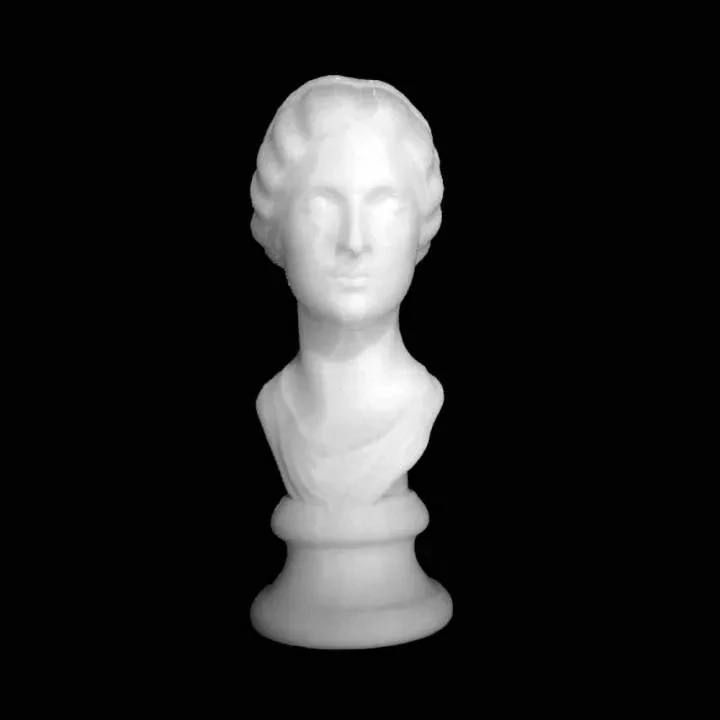
3D Printable Bust of a Roman Woman at The State Hermitage Museum, St Petersburg by Scan The World
The appearance of sculptural portraits in Ancient Rome had much to do with the cult of ancestors. Portraits were often made in the form of a small bust which was attached to a stone pillar or herm and placed in a tomb. The Hermitage portrait would seem to have been made for a burial vault, hence the master's attention to conveying a physical likeness. In sculptures of the early Empire period, including this piece, Greek traditions continued to influence the plastic working up of form and the softer modelling of the marble surface. At the same time the typical Roman approach was still reflected in the details of the fashionable hairstyle, the careful working up of the soft folds of the clothing attached to the shoulders with flat fibulae. The strict, simple nature of the bust can be explained by its funerary purpose. This object is part of "Scan The World". Scan the World is a non-profit initiative introduced by MyMiniFactory, through which we are creating a digital archive of fully 3D printable sculptures, artworks and landmarks from across the globe for the public to access for free. Scan the World is an open source, community effort, if you have interesting items around you and would like to contribute, email stw@myminifactory.com to find out how you can help.Scanned : Photogrammetry (Processed using Agisoft PhotoScan) | Download free and paid 3D printable STL files
Download from myminifactory